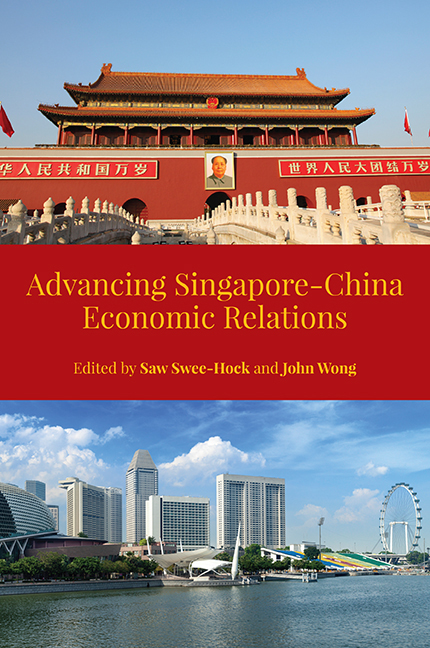Book contents
- Frontmatter
- Contents
- List of Tables
- List of Figures
- Preface
- The Contributors
- 1 Evolution of Singapore-China Economic Relations
- 2 The Political Economy of Singapore's Unique Relations with China
- 3 Suzhou Industrial Park: Going Beyond a Commercial Project
- 4 Translating Concept into Practice: Sino-Singapore Tianjin Eco-City Project
- 5 China's Foreign Direct Investment in Singapore since the 2000s
- 6 Singapore's Direct Investment in China since the 1980s
- 7 Singapore-China Trade and CSFTA
- 8 Growth of Tourism between China and Singapore
- 9 Enhancing Educational Collaborations between China and Singapore
- Index
9 - Enhancing Educational Collaborations between China and Singapore
Published online by Cambridge University Press: 21 October 2015
- Frontmatter
- Contents
- List of Tables
- List of Figures
- Preface
- The Contributors
- 1 Evolution of Singapore-China Economic Relations
- 2 The Political Economy of Singapore's Unique Relations with China
- 3 Suzhou Industrial Park: Going Beyond a Commercial Project
- 4 Translating Concept into Practice: Sino-Singapore Tianjin Eco-City Project
- 5 China's Foreign Direct Investment in Singapore since the 2000s
- 6 Singapore's Direct Investment in China since the 1980s
- 7 Singapore-China Trade and CSFTA
- 8 Growth of Tourism between China and Singapore
- 9 Enhancing Educational Collaborations between China and Singapore
- Index
Summary
Introduction
Forging education links has been an integral part of the well-established bilateral cooperation that existed between Singapore and China. The former is keen to offer assistance to Chinese Government officials from both the central and provincial levels and to private citizens to benefit from the good educational opportunities available in Singapore, based on English as a medium of instruction. While many Chinese students are attending schools run according to the system as it exists, special programmes have been designed to suit the Chinese students. This is just a continuation of the tradition practised by Singapore to provide education, with scholarships, to citizens from nearby countries as part of its foreign aid and as part of its objectives to develop the island state into an international education hub within its overall strategic economic plan. On the other hand, China is quite interested to upgrade the skill and knowledge of some of its senior government officials by sending them to the city state to attend specially tailored training or formal degree programmes offered by government departments and institutions of higher learning. There are Singapore students who opt to study in Chinese schools and universities, but not on such a big scale as those coming from mainland China.
With the demand for foreign education becoming quite prevalent among the increasingly more affluent families, cross-border education has become an important industry that can contribute to the development of the economies of the receiving countries. Some of these countries may also regard foreign students as a way of injecting more talent into the labour force to ensure the continuous growth of their economies in the years ahead. Indeed, economic consideration has emerged as the major driving force in the promotion of international educational collaboration, though the traditional notion of promoting language, culture and greater understanding still holds. In a knowledge-based economy, having an edge over other countries in talent and innovation is of primary importance in boosting economic competitiveness.
- Type
- Chapter
- Information
- Advancing Singapore-China Economic Relations , pp. 264 - 288Publisher: ISEAS–Yusof Ishak InstitutePrint publication year: 2014

